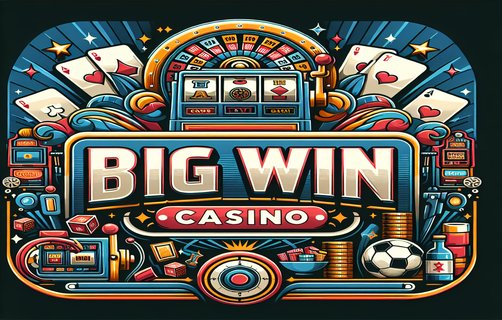The Dynamics of Gaming: An In-Depth Look at Strategic Elements
गेमिंग का गतिशीलता: रणनीतिक तत्वों पर गहन दृष्टिकोण
In the world of board games, a myriad of mechanics establish the engagement and excitement players experience. Particularly, status markers, game board flow, winning conditions, builders, randomized game effects, and board movement play intricate roles in shaping gameplay. A comprehensive understanding of these components reveals not just the structure of a game, but also its capacity for innovation and player involvement.
Firstly, status markers serve as essential reminders of player positions and progress. They can denote achievements, tokens, health, or even special capabilities. Their presence creates a dynamic battlefield where players must constantly adapt based on changing statuses, fostering a more engaging experience.
Game board flow is another crucial aspect. The arrangement of elements influences players’ decision-making processes. A well-designed board encourages strategic thinking, as players must navigate obstacles and opportunities. For instance, having pathways that lead to high-reward areas interspersed with risks can maintain tension and excitement throughout the game.

Winning conditions often determine how players approach their strategies. These conditions vary widely; some games may emphasize resource accumulation, while others focus on territory control or completing specific tasks. This variability allows for numerous strategies and can encourage players to explore unconventional approaches.
Builders can also have a transformative impact. They permit players to construct and customize their gameplay experience actively. This allows for a highly personalized game where each player feels a deeper connection to their achievements. Building components can change the game’s trajectory, leading to multiple pathways to victory.

Randomized game effects add an element of unpredictability that can both enhance and complicate the gaming experience. These effects may stem from dice rolls, shuffled cards, or randomized events that compel players to adapt. Such uncertainty ensures that no two gameplay sessions are identical, fostering replayability and excitement.
Finally, board movement encompasses how players navigate the game space. Strategic movement can lead to tactical advantages, surprise attacks, or even essential retreats. Players must think critically about their positioning, weighing risks against potential rewards.
In conclusion, understanding these multifaceted aspects enhances the overall appreciation of board games. By considering status markers, game board flow, winning conditions, builders, randomized game effects, and board movement, players can not only elevate their strategy but also deepen their enjoyment of the game.
बोर्ड खेलों की दुनिया में, कई मैकेनिक्स खिलाड़ियों के अनुभव में संलग्नता और उत्साह स्थापित करते हैं। विशेष रूप से, स्थिति मार्कर, गेम बोर्ड प्रवाह, जीतने की शर्तें, निर्माण, यादृच्छिक खेल प्रभाव और बोर्ड आंदोलन खेल के भीतर विपणन सामग्रियों में जटिल भूमिकाएं निभाते हैं। इन घटकों की व्यापक समझ न केवल खेल की संरचना को प्रकट करती है, बल्कि इसके नवाचार और खिलाड़ी संलग्नता की क्षमता को भी उजागर करती है।
पहले, स्थिति मार्कर खिलाड़ियों की स्थिति और प्रगति के आवश्यक अनुस्मारक के रूप में कार्य करते हैं। वे उपलब्धियों, टोकनों, स्वास्थ्य या यहां तक कि विशेष क्षमताओं का प्रतिनिधित्व कर सकते हैं। उनकी उपस्थिति एक गतिशील युद्धक्षेत्र बनाती है जहां खिलाड़ियों को लगातार बदलती स्थितियों के आधार पर अनुकूलित करना होता है, जिससे एक अधिक आकर्षक अनुभव में योगदान होता है।
गेम बोर्ड प्रवाह एक अन्य महत्वपूर्ण पहलू है। तत्वों की व्यवस्था खिलाड़ियों के निर्णय लेने की प्रक्रिया को प्रभावित करती है। एक अच्छी तरह से डिज़ाइन किया गया बोर्ड रणनीतिक सोच को बढ़ावा देता है, क्योंकि खिलाड़ी बाधाओं और अवसरों से गुजरना चाहते हैं। उदाहरण के लिए, उच्च पुरस्कार वाले क्षेत्रों की ओर ले जाने वाले मार्गों का होना जोखिमों के साथ संयुक्त हो सकता है, जिससे खेल का तनाव और उत्साह बढ़ता है।
जीतने की शर्तें अक्सर यह निर्धारित करती हैं कि खिलाड़ी अपनी रणनीतियों के प्रति कैसे दृष्टिकोण करते हैं। ये शर्तें व्यापक रूप से भिन्न होती हैं; कुछ खेल संसाधन संचय पर जोर देते हैं, जबकि अन्य क्षेत्र नियंत्रण या विशिष्ट कार्यों को पूरा करने पर ध्यान केंद्रित करते हैं। यह विविधता कई रणनीतियों की अनुमति देती है और खिलाड़ियों को असामान्य दृष्टिकोणों का पता लगाने के लिए प्रोत्साहित कर सकती है।
निर्माता भी परिवर्तक प्रभाव डाल सकते हैं। वे खिलाड़ियों को सक्रिय रूप से अपने खेल अनुभव को बनाने और अनुकूलित करने की अनुमति देते हैं। यह प्रत्येक खिलाड़ी को उनके उपलब्धियों के साथ एक गहरा संबंध महसूस करने की अनुमति देता है। निर्माण के घटक गेम की दिशा बदल सकते हैं, जीत के लिए कई रास्ते की ओर ले जा सकते हैं।
यादृच्छिक खेल प्रभाव एक अपरिहार्य तत्व को जोड़ते हैं जो खेल अनुभव को बढ़ा भी सकते हैं और जटिल बना सकते हैं। ये प्रभाव डाइस रोल, शफल किए गए कार्ड, या यादृच्छिक घटनाओं से उत्पन्न हो सकते हैं जो खिलाड़ियों को अनुकूलित करने के लिए मजबूर करते हैं। इस तरह की अनिश्चितता सुनिश्चित करती है कि कोई भी दो गेमप्ले सत्र समान नहीं हैं, पुनरावृत्ति और उत्साह को बढ़ावा देती है।
अंत में, बोर्ड आंदोलन यह शामिल करता है कि खिलाड़ी गेम स्थान में कैसे नेविगेट करते हैं। रणनीतिक आंदोलन सामरिक लाभ, आश्चर्यजनक हमले, या यहां तक कि आवश्यक रिट्रीट की ओर ले जा सकता है। खिलाड़ियों को अपनी स्थिति के बारे में आलोचनात्मक रूप से सोचना चाहिए, जोखिमों को संभावित पुरस्कारों के खिलाफ तौलना चाहिए।
संक्षेप में, इन बहुआयामी पहलुओं को समझना बोर्ड खेलों की समग्र सराहना को बढ़ाता है। स्थिति मार्कर, गेम बोर्ड प्रवाह, जीतने की शर्तें, निर्माता, यादृच्छिक खेल प्रभाव और बोर्ड आंदोलन पर विचार करके, खिलाड़ी न केवल अपनी रणनीति को ऊंचा कर सकते हैं, बल्कि खेल के प्रति अपनी खुशी को भी बढ़ा सकते हैं।

comments
GamerJoe
This article brilliantly captures the essence of game mechanics!
StrategyNinja
I love how it details each aspect of the game. Very informative.
BoardGameBard
The insights on status markers were particularly enlightening.
InnovativePlayer
The connection between builders and game customization is so compelling!
GameLover88
Randomized effects really elevate replayability, I totally agree.
Tactician
Great read! I never considered how board movement impacts strategy so much.